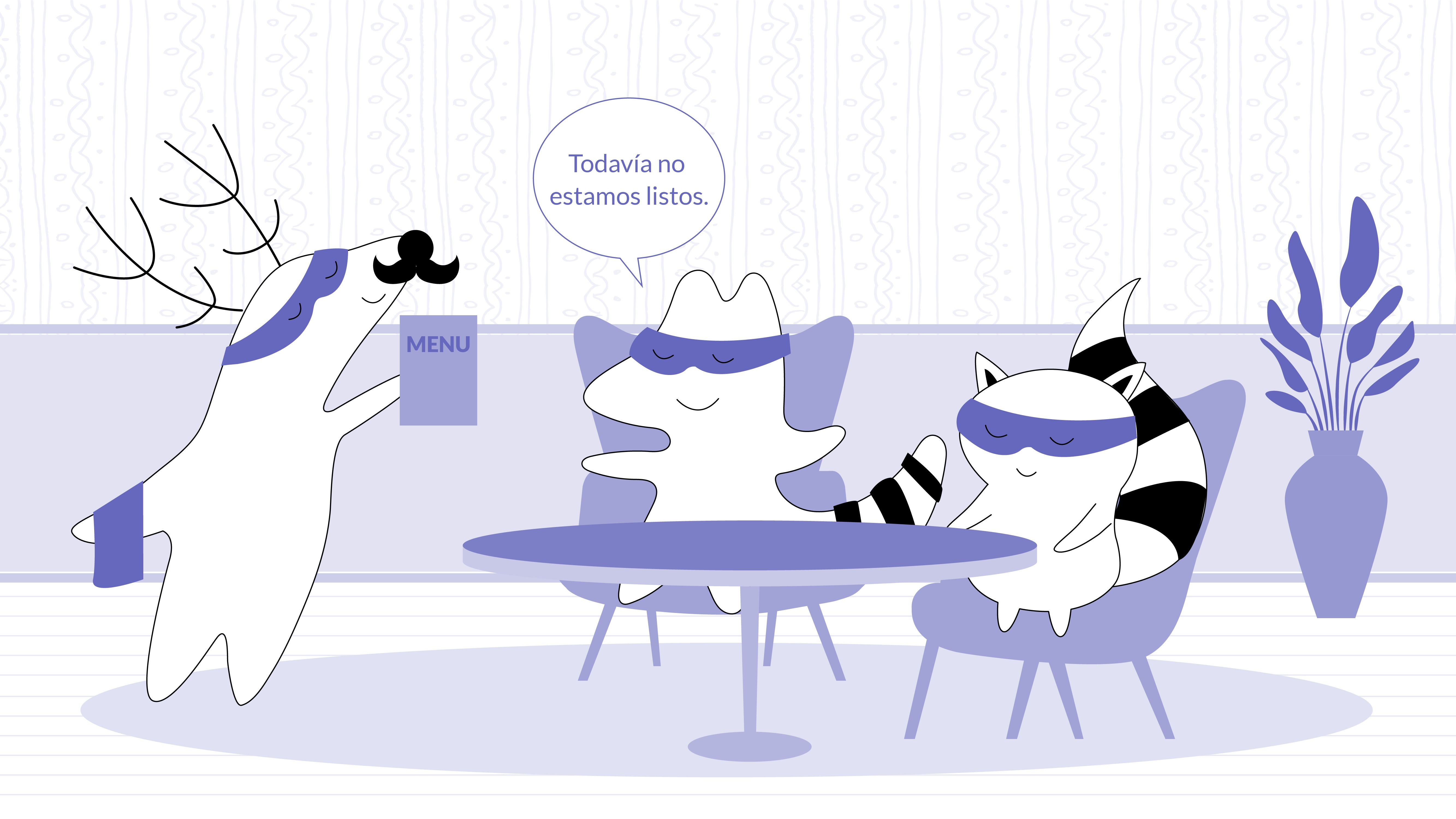
Ordering food using your Spanish skills, saying things like "buenas tardes" and "quiero una tortilla," can be an excellent way to show yourself and others that you're truly fluent in Spanish. To succeed, you'll need not only a deep knowledge of vocabulary and grammar, but also an understanding of Spanish cuisine and cultural norms.
So, if you're visiting a Spanish restaurant soon and want to order like a local, keep reading. We'll tell you everything you need to know when telling the waiter exactly what you want in Spanish. ¡Vamos!
Learn Spanish with Langster
What to Order: The Best Spanish Food
Spanish restaurants have a great variety of dishes and delicious food you'll love. Of course, what to order is a matter of personal preference, but we’ll tell you about some of the most popular (and delicious!) Spanish food to know about as a beginner Spanish student.
Some great dishes in Spanish food culture include paella, a rice dish made with saffron and a mixture of seafood, meat, and vegetables; tapas, a variety of small dishes that can range from simple snacks to full meals; and tortilla española, a kind of omelette made with potatoes and onions.
Additionally, Spanish cuisine also boasts a range of cured meats, cheeses, and bread. To truly experience the best of this world, you should certainly try a variety of dishes and sample local specialties.
So, here's a list of traditional Spanish dishes you should not miss out on when you go to a restaurant!
Tortilla
This is a famous Spanish dish made with olive oil, eggs, potatoes, and onion. Also called the Spanish omelette because of the great number of eggs it requires, it's traditional in Southern Spain, particularly the Andalusian region.
The combination of its texture, delicious flavor, versatility, and cultural significance make the Spanish tortilla a beloved dish you can order at any tapas bar you might visit.
Spanish Blood Sausage
Also called Spanish chorizo, it is made from pork blood, rice, and seasonings such as onion, paprika, and spices. The mixture is typically stuffed into a natural pork casing and then boiled or grilled. Many people call it the Spanish version of the Argentinian chorizo.
It is often served as a tapa (appetizer) or as part of a main dish and is commonly paired with other traditional Spanish ingredients such as potatoes, eggs, and beans, making it a great option to order – as long as you're not vegetarian.
Patatas Bravas
Patatas bravas is another delicious dish you should try out! It consists of fried potatoes paired with salsa brava, a spicy sauce made with tomatoes and paprika.

The crispy exterior and soft interior of the potatoes create a satisfying contrast in texture, while the combination of seasonings and spices adds depth and complexity to the dish.
Paella Valenciana
Also called paella de marisco, this is a traditional Spanish dish you'll love if you enjoy eating rice and seafood. It originated in the region of Valencia (thus its name) and is typically seasoned with saffron, which gives it its characteristic yellow color and distinct flavor, as well as paprika, garlic, and other spices.
The dish is cooked in a large, shallow pan called a "paellera," which allows the rice to cook evenly and the flavors to blend together.
It's worth noting that there are many variations of paella, each with its own unique ingredients and flavor profile, but Paella Valenciana is one of the most traditional and classic versions of the dish. It’s considered a symbol of Spanish cuisine.
Churros con Chocolate
Spanish food is also known for its delicious sweet dishes! A great example is crispy churros, made with traditional tube-shaped pastry, deep-fried in oil and then sprinkled with sugar.
Churros con chocolate can be enjoyed as a satisfying treat any time of the day – even for breakfast! Just bear in mind that these treats are often served in large portions, making them perfect for sharing with friends and family.
Whether you're a fan of sweet treats or just looking to try something new, churros con chocolate are sure to satisfy your soul.
Seafood Dishes
Spanish cooking is also famous for using seafood in many of its dishes. For instance, you should definitely try out gambas al ajillo or langostinos fritos.
Other options if you love seafood dishes include zarzuela de mariscos, which typically features a mixture of seafood, such as shrimp, crab, and fish, simmered in a flavorful tomato-based broth with vegetables and white wine.
You can also try fideuá, a noodle dish that is similar to paella but made with short, thin noodles instead of rice.
And, let's not forget about caldereta de langosta, a traditional lobster stew that is popular in Spanish cuisine. It is prepared with vegetables, white wine, and spices, resulting in a flavorful and satisfying dish that showcases the lobster’s sweetness.
Phrases You'll Need to Order at a Spanish Restaurant
Have you decided what you want? Then, it's time to order Spanish food using your language skills. Make sure to study grammar and vocabulary beforehand to truly understand what you’re saying and how to structure your sentences properly.
Below, you'll find some useful phrases to make sure your order is clear.
Greetings

The first thing you'll do when ordering at the restaurant is to greet the waiter. For this, you have a variety of options that depend on the time of day. Have a look at the examples:
Spanish
English
Hola, buenas tardes
Hi, good afternoon.
Buenas noches
Good evening.
Buen dia.
Good morning.
¿Qué tal?
How are you doing?
Asking for the Menu
Now, you'll need the menu to choose your favorite Spanish dish. Here are some options to ask the waiter for the menu:
Spanish
English
¿Me podrías traer la carta?
Can you bring me the menu?
Traeme el menú, por favor.
Please, bring me the menu.
¿Puedo pedirte el menú?
Can I ask you for the menu?
Asking for More Time

Do you need more time to decide what to eat? No problem, you can use one of the following phrases:
Spanish
English
Todavía no estamos listos.
We are not ready yet.
Necesito unos minutes más.
I need a couple more minutes
¿Nos puedes dar un minuto más, por favor?
Can you give us one more minute, please?
Ordering
Now comes the most important part: ordering your food. Again, you have many options to order, such as:
Spanish
English
Me gustarían unas patatas bravas.
I'd like to have patatas bravas.
Te encargo. una tortilla.
Can I get a tortilla?
¿Me traes una paella?
Can you bring me a paella?
Es para mi.
It's for me.
Es para él/ella./ [It's for him
It's for him/her.
Vamos a compartir.
We are going to share.
Todo está delicioso.
Everything is delicious.
Asking for the Check & Paying

You've reached the end of your gastronomic journey, and it's time to pay. Here are your options to ask for the check and inquire about available payment methods:
Spanish
English
Te pido la cuenta, por favor.
Can I get the check, please?
¿Puedes traer la cuenta?
Can you bring me the check?
¿Puedo pagar en efectivo?
Can I pay with cash?
¿Aceptan tarjetas?
Do you take cards?
¡Muchas gracias!
Thank you!
The Bottom Line
There you have it: a crash course on Spanish dining. The next time you find yourself at a Spanish restaurant, you'll be ready to order like a native speaker and impress your dining companions with your language skills.
But, if you need a bit more practice to start ordering food in Spanish, you can always support your language journey with an interactive app like Langster. Just don't forget the most important rule of all: enjoy your food, and buen provecho!









